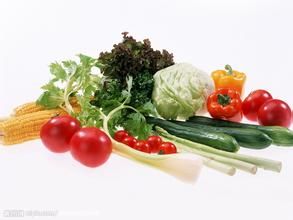父母必读:给菜取好名让孩子爱不释口(图)
 父母必读:给菜取好名让孩子爱不释口
父母必读:给菜取好名让孩子爱不释口In a new study,186 four-year-olds were given regular carrots and, on other lunchdays, they were given the same vegetables renamed X-ray VisionCarrots. On the latter days, they ate nearly twice as many.
在一项最新研究中,研究人员让186名四岁的儿童吃普通胡萝卜,并在另外几天午餐时给他们吃同样的胡萝卜,但把名字改成了“X光透视眼胡萝卜”。结果发现,孩子们在这几天所食用的胡萝卜量为之前的近两倍。
The studysuggests the influence of these names might persist。
研究表明,这些“酷名”的影响可能会持续。
Children continued to eat about 50 percent more carrots even on the dayswhen they were no longer labeled as anything special。
即便之后没再给胡萝卜起什么特别的名字,孩子所摄入的胡萝卜量仍然比以往多约50%。
Theresearch, funded by the Robert Wood Johnson Foundation, waspresented at the annual meeting of the School Nutrition Associationin Washington, DC。
这项研究由罗伯特·伍德·约翰森基金会资助,研究结果在华盛顿召开的“学校营养协会”的年度会议上公布。
"Cool namescan make for cool foods," says lead author Brian Wansink of CornellUniversity. "Whether it be 'power peas' or 'dinosaur broccolitrees,' giving a food a fun name makes kids think it will be morefun to eat. And it seems to keep working--even the next day,"Wansink said。
研究主要负责人、康奈尔大学的布莱恩·万辛克说:“名字酷,东西似乎也就酷。所以无论是‘大力豌豆’还是‘恐龙花椰菜’,给食物起一个有趣的名字能让孩子们觉得这些东西吃起来会更有意思。而且这种影响会持续——即便到了第二天也如此。”
Similarresults have been found with adults. A restaurant study showed that when the Seafood Filet was changed to Succulent Italian Seafood Filet, sales increased 28 percent and taste rating increased by 12percent. "Same food, but different expectations, and a different experience," said Wansink, author of "Mindless Eating: Why We EatMore Than We Think."
大人们也具有这种情结。一项餐馆调查发现,将“海鱼”改名为“意大利多汁海鱼”后,其销量上升了28%,口味评级上升了12%。《食无止境:为什么我吃得比认为的多》一书的作者万辛克说:“其实是同样的东西,但期望值和体验都不同。”
The veggie study was conducted in pre-schools, but the researchers believe the same naming tricks can work with children at home。
这项有关蔬菜的研究在幼儿园开展,但研究人员认为“酷名效应”同样适用于不上幼儿园的孩子。
"I've been using this with mykids," said researcher Collin Payne, "Whatever sparks theirimagination seems to spark their appetite."
研究人员科林·佩恩说:“我就对我的孩子采取这种方法。能激发他们想象力的东西似乎也能激发他们的胃口。”
文章关键词: 双语
- 双语:聪明孩子的“脑筋急转弯”(图)2014-12-12 11:50
- 双语:男童倒地耍宝求奥巴马关注(组图)2014-12-12 11:35
- 幽默双语故事:聪明的儿子(图)2014-12-12 09:58
- 双语:早教侵害儿童身心健康2014-12-11 16:54
- 双语:美国9岁女童练枪误杀教练(组图)2014-12-11 14:10

